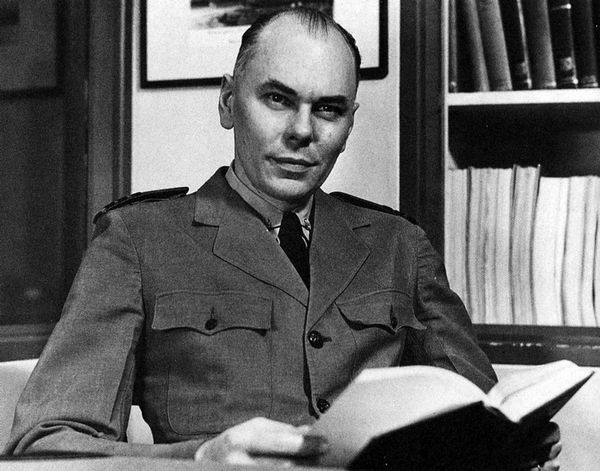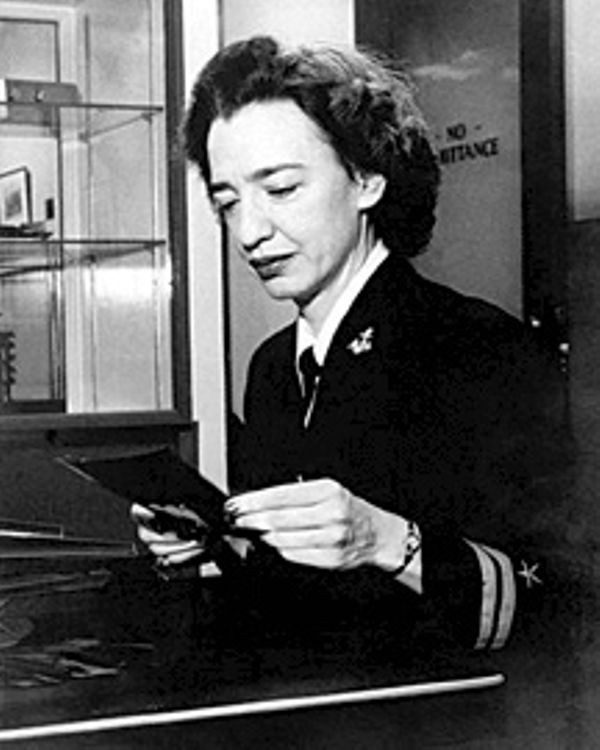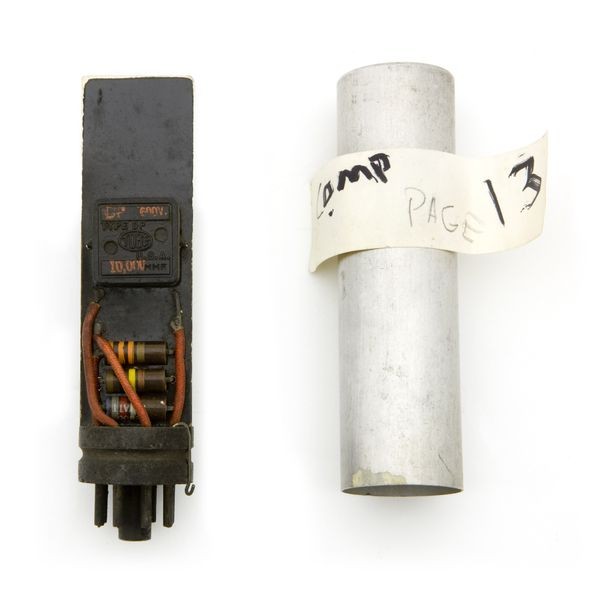Howard Aiken
Howard Aiken (1900-1973)
Aiken, a physicist, was frustrated by the tedious work of solving equations: “All these computational difficulties can be removed by the design of suitable automatic calculating machinery.” A colleague described him as “forceful, self-assured, and formidable,” but “a marvelous teacher.”
Howard Aiken
Howard Aiken realized that one way to reduce human error in calculations was to reduce human involvement. In 1937 he proposed an automated calculating machine. IBM and Harvard agreed to build it.
Completed in 1944, Aiken’s “Harvard Mark I” calculator helped design America’s atomic bomb. More sophisticated Mark II, III, and IV versions followed.
Harvard Mark I/IBM ASCC
The electromechanical Harvard Mark I was powered by a 50-foot rotating shaft. It was the brainchild of Howard Aiken, but built by IBM, whose chairman Thomas J. Watson Sr. was furious at the limited public credit IBM received.
View Artifact DetailGrace Murray Hopper (1906-1992)
Grace Hopper taught mathematics at Vassar College before joining Howard Aiken’s lab during World War II, where she programmed the Mark I. Hopper left to work on UNIVAC and early programming languages, especially COBOL for business computing.
View Artifact DetailHarvard Mark III magnetic head
The Harvard Mark III used magnetic drums to store 16-digit decimal numbers as well as program instructions. But unlike most modern computers, the memories for data and instructions were separate—a design now called the “Harvard architecture."
View Artifact DetailHarvard Mark IV 64-bit magnetic shift register
The Mark IV, the last of Aiken’s machines at Harvard, had ferrite core memory and was much faster than its predecessor. It was used at Harvard by the US Air Force for engineering and scientific calculations.
View Artifact DetailHarvard Mark III resistor/capacitor assembly
The Harvard Mark III used mixed technologies: about 2,000 relays and 5,000 vacuum tubes. The January 23, 1950 cover article of Time magazine predicted, too enthusiastically, that Aiken’s third calculator would have “more effect on mankind than atomic energy.”
View Artifact Detail




